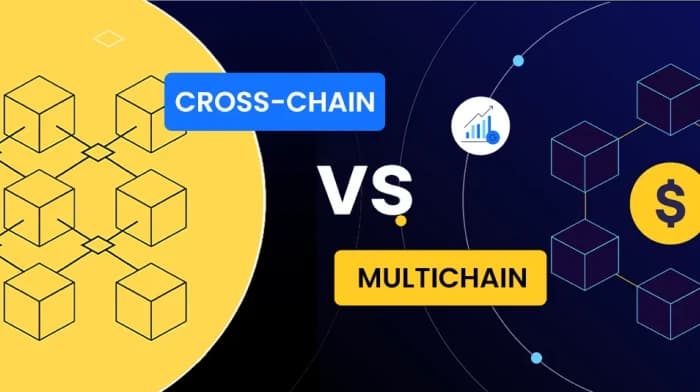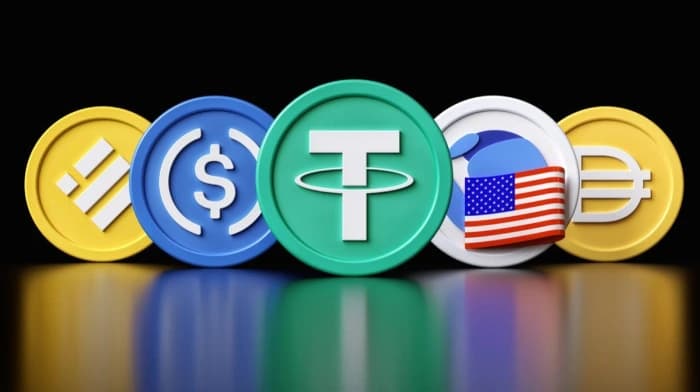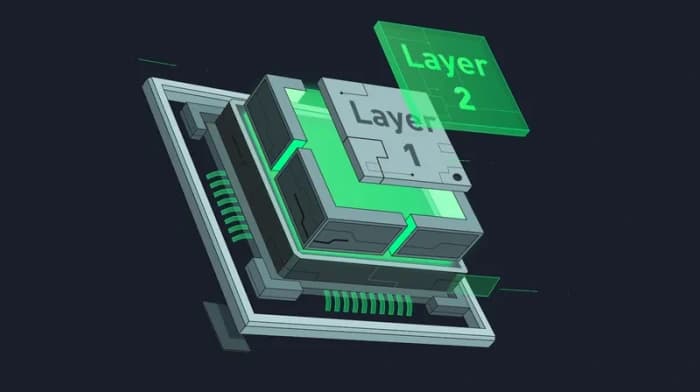
Introduction
The world of blockchains is getting more complicated by the day. We've got hundreds of blockchains, layers of networks, and all sorts of chains popping up, making it tough to keep track of everything. This is creating a bit of a mess with lots of chains all trying to work together.
It's not going to get simpler - in fact, we could see thousands more blockchains show up in the near future, handling trillions of dollars worth of value.
What does this mean, exactly? Well, for starters, it raises a question: how are all these different blockchains going to work together seamlessly? That's where the idea of chain compatibility comes in.
We're seeing some strides in blockchain technology like LayerZero's move to bring cross-chain interoperability to the Unichain testnet, which now links over 90 blockchains.
Understanding Cross-Chain Compatibility
What Is Cross-Chain Compatibility?
At its heart, cross-chain compatibility is about allowing different blockchain networks to communicate and work with each other's information and assets. It's a way for them to understand each other, essentially.
Cross-chain compatibility is a game changer in the blockchain world. It lets various blockchain networks talk to each other and work together - something that was impossible before. In the past, these networks were like islands. Now they can interact freely, opening up a whole new world of possibilities.
The Network Effect
Think of it like a network where everything is connected:
- Assets and tokens can be transferred seamlessly between blockchain systems
- Smart contract information flows freely
- Data sharing occurs without intermediaries
The ultimate goal here is to create a blockchain world where everything works together smoothly. It's like how you can send texts and make calls to friends who use different phone brands - you don't need to worry about whether they're on the same platform as you.
Key Benefits of Cross-Chain Technology
Enhanced Liquidity
One of the biggest advantages is that it makes it easier to buy and sell assets. When you can move assets between blockchains, it increases the number of people who can buy and sell them - this is called liquidity.
It's like being able to trade a stock on multiple markets, not just one. The more places you can trade something, the more likely you are to find someone who wants to buy or sell it.
Reduced Fragmentation
Cross-chain solutions help break down barriers and create a more unified network. When blockchains can interact and exchange value with each other, it makes the whole system more connected and useful.
Innovation Catalyst
When different blockchains work together, it creates an environment where new ideas and solutions can flourish:
- Developers can tap into a broader set of tools and features
- Combining the best of what each blockchain has to offer
- Creating more robust decentralized applications
Cost Effectiveness
Cross-chain solutions also make things more cost-effective. Users can jump between networks to find the best deals on transaction fees, which helps the whole system run more smoothly.
How Cross-Chain Technology Works
Cross-Chain Bridges
Cross-chain bridges make it possible to move assets - think tokens or NFTs - between blockchain platforms. This basically lets users transfer their assets between blockchains seamlessly.
It's now possible to:
- Move a token from Ethereum to Binance Smart Chain
- Use Bitcoin on applications that exist on other blockchains
- Transfer NFTs between different networks
Atomic Swaps
Atomic swaps work by using smart contracts to hold and release funds when both sides of a deal have done their part. This way, people can trust that they'll get what they're expecting without needing a middleman to oversee the transaction between blockchains.
Interoperability Protocols
These protocols are what enable cross-chain wallets to connect with and communicate between different blockchains. The backbone of communication between networks is formed by these protocols, allowing:
- Transaction handling across multiple chains
- Data sharing between networks
- Contract execution across blockchain boundaries
Cross-Chain Wallets: The User Interface
Key Features
Cross-chain wallets are essential for managing assets across multiple blockchain networks:
- Multi-blockchain support: Handle different chains all from one place
- Atomic swap capabilities: Trade cryptocurrencies directly between blockchains
- Bridge integration: Move tokens and assets between networks
- Unified interface: Access all blockchain interactions from one platform
Security Measures
These wallets rely on decentralized security measures:
- Advanced cryptography
- Smart contract protection
- Decentralized asset management
- Secure cross-network transfers
Leading Cross-Chain Projects
Polkadot
Polkadot is a platform that lets different blockchains talk to each other and share value without needing a middleman. Its parachain architecture allows separate blockchains to:
- Communicate effectively
- Exchange data seamlessly
- Move assets around freely
Cosmos
Cosmos aims to create the "Internet of Blockchains" - essentially a network of blockchains that can all talk to each other. It relies on the Inter Blockchain Communication (IBC) protocol to enable:
- Cross-chain communication
- Token movement between chains
- Data transfer across networks
Wanchain
Wanchain focuses on creating secure bridges between blockchains, designed to let assets be transferred safely and efficiently. The platform provides infrastructure connecting major chains such as:
- Bitcoin
- Ethereum
- Binance Smart Chain
THORChain
THORChain is a decentralized protocol for cross-chain asset swaps, creating a network where transfers can happen without centralized exchanges. It relies on its native RUNE token to facilitate seamless transactions across blockchain networks.
Avalanche
Avalanche is recognized for its fast processing speeds and near-instantaneous transaction times. The platform has created pathways (blockchain bridges) to connect with Ethereum and other networks, allowing users to shift assets effortlessly between ecosystems.
Impact on DeFi and Trading
Revolutionary Trading Experience
Cross-chain compatibility is transforming cryptocurrency exchanges by:
- Removing limitations of single-blockchain systems
- Enabling asset movement between different networks
- Eliminating intermediaries and central exchanges
- Making trading faster and cheaper
Enhanced DeFi Capabilities
DeFi enthusiasts can now:
- Access protocols spanning multiple blockchains from one platform
- Lend assets on Ethereum while borrowing on Binance Smart Chain
- Swap tokens on Avalanche without platform switching
- Improve liquidity flow between platforms
Real-World Applications
Gaming and NFTs
Cross-chain technology opens up exciting possibilities:
- Gaming apps where players earn rewards on one blockchain and use them on another
- NFT marketplaces that work across multiple chains
- Broader audiences and increased liquidity for digital assets
Decentralized Governance
Cross-chain compatibility can revolutionize governance:
- Token holders can participate regardless of their blockchain
- Decision-making across multiple networks
- More unified and cohesive communities
Global Financial Services
The technology enables:
- Faster international money transfers
- Reduced fees for cross-border transactions
- More efficient global trade processes
Key Interoperability Protocols
LayerZero
LayerZero facilitates secure transactions between blockchain networks using sidechains. The protocol:
- Speeds up cross-chain operations
- Makes decentralized apps run more smoothly
- Motivates network participation through its governance model
Wormhole
Created by the Solana team, Wormhole allows:
- Asset and data transfer across networks like Ethereum and Solana
- Secure and efficient blockchain bridges
- Support for decentralized organizations and smart contracts
Chainlink
Chainlink provides:
- Decentralized oracle network services
- Reliable and secure data feeds for smart contracts
- Cross-chain communication capabilities
- Real-world data access on blockchain networks
The Future of Cross-Chain Technology
Emerging Trends
Several trends are shaping the future:
- Global transaction bridges: Making international transfers quicker and more efficient
- Cross-chain DeFi expansion: Opening up broader financial services
- Scalability solutions: Addressing blockchain performance limitations
- Enhanced user experience: Making blockchain technology more accessible
Business Applications
Cross-chain technology offers businesses:
- Increased scalability and flexibility
- Access to multiple blockchain networks
- Expanded market reach
- Improved digital asset utilization
- Reduced dependency on third-party services
Integration Strategies
Companies can leverage cross-chain technology by:
- Incorporating it into existing blockchain systems
- Linking up with multiple blockchain networks
- Building custom solutions for specific business needs
- Accessing decentralized finance platforms and innovations
Challenges and Solutions
Current Limitations
Cross-Chain Solutions
Cross-chain compatibility addresses these limitations by:
- Enabling direct blockchain communication
- Facilitating seamless asset transfers
- Creating more efficient and scalable systems
- Building a unified blockchain ecosystem
Traditional blockchain networks operate in isolation, unable to directly communicate with other blockchains or move assets between them.
Conclusion
Cross-chain compatibility represents a fundamental shift in how blockchain networks operate and interact. As we move toward a future with thousands of interconnected blockchains handling trillions in value, the ability for these networks to communicate seamlessly becomes not just beneficial, but essential.
The technology promises to:
- Break down barriers between blockchain ecosystems
- Create more efficient and user-friendly experiences
- Drive innovation across the entire blockchain landscape
- Make blockchain technology more accessible to mainstream adoption
The future of blockchain lies not in isolated networks competing against each other, but in collaborative ecosystems working together to create a more connected, efficient, and innovative digital economy.
Final Thoughts
As blockchain technology continues to evolve, cross-chain compatibility will play an increasingly crucial role in determining which projects succeed and how the entire ecosystem develops. The bridges we build today between different blockchains will form the foundation of tomorrow's interconnected digital economy.


